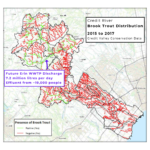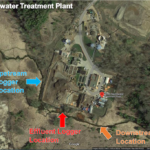As GOES THE AIR GOES THE EFFLUENT
Sewage plant effluent temperature is impacted by air temperature. To explore how effluent temperature from 5 southern Ontario wastewater treatment plants was impacted by air temperature we have plotted the data along with results from the closest Environment Canada Weather Station.
The location of effluent temperature loggers is available in the Data Library as is the air temperature data and Environment Canada Weather locations.
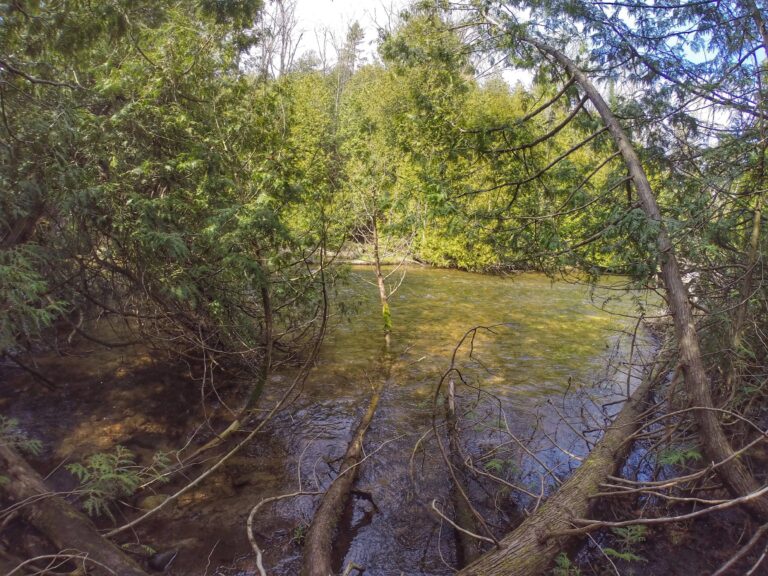
Sun reaching the surface of the West Credit River. The cover of cedars helps shield part of the West Credit River from direct sunlight, keeping the river cool on hot summer days. Photo Credit – Steve Noakes: Trout Unlimited Canada
A plot showing effluent temperature and air temperature for the Fergus wastewater treatment plant is shown below and the plots for the other 4 plants are available at these links: Georgetown Shelburne Acton Orangeville
All plots show the following trends:
1- The effluent temperature is correlated with average air temperature.
- When the average daily air temperature increases the effluent temperature increases.
- When the average daily air temperature decreases the effluent temperature decreases.
2 – Average air temperature tends to pull the effluent temperature up or down over time
- When the air temperature is hotter than the effluent temperature for several days the effluent temperature continues to increase towards the higher air temperature.
- The hottest effluent temperatures occur after consecutive days of high average air temperatures
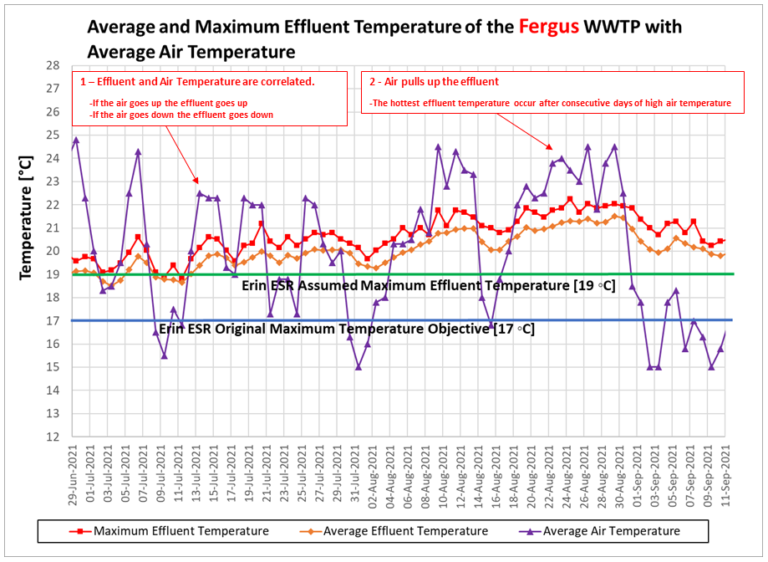
It makes sense that over time air temperature would act to pull sewage effluent temperature up or down. Air is in contact with the wastewater during wastewater treatment in two process areas. The first is when air is bubbled through wastewater during the treatment process and the second is when wastewater is treated and stored in outdoor tanks. Outdoor tanks are open to the air and receive sunlight, which increases temperature on hotter days and decreases it on colder days.
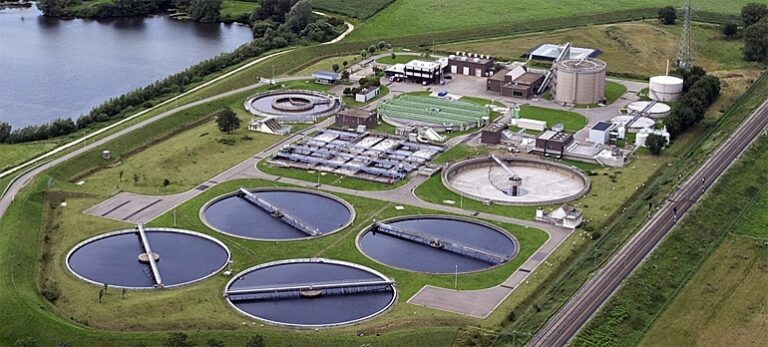
Aerial photograph of a wastewater treatment plant showing treatment tanks exposed to air and sunlight.
Photo credit EconMena “How does a Wastewater Treatment Plant Work”.
Some of the trends visible in the data collected by the Coalition for the West Credit River are contrary to those stated in the Thermal Assessment accepted as part of the Erin ESR. Most notably this statement:
“The WWTP effluent temperatures gradually increase in warmer weather, and slowly decrease in cooler weather, and are not affected by swings in ambient air temperature.”
Source: Town of Erin Urban Centre Wastewater Servicing Class Environmental Assessment Environmental Study Report FINAL REPORT Volume 2 of 3 Appendix B to J: Thermal Assessment of Erin WWTP on West Credit. Page 278 of 379.
Figure 2 below is from the Erin ESR Thermal Assessment. It plots ambient air temperature and effluent temperature for the Elora WWTP in 2017. This figure from the Thermal Assessment shows that for most of the summer the ambient air temperature was above effluent temperature and that effluent temperature barely increased.
This is contrary to the Coalition data which shows that when the ambient air temperature rises effluent temperature increases. In our next blog post we will investigate this discrepancy.

Re-print of Erin ESR Thermal Assessment Figure 2 showing a period of time in June, July and August of 2017 when the ambient air temperature is above the effluent temperature but the effluent temperature does not significantly increase.
Source: Town of Erin Urban Centre Wastewater Servicing Class Environmental Assessment Environmental Study Report FINAL REPORT Volume 2 of 3 Appendix B to J: Thermal Assessment of Erin WWTP on West Credit. Page 279 of 379.
Over the next 10 years air temperatures are expected to increases as the climate warms but climate change was not adequately considered in the ESR. The Coalition is concerned that warm effluent will impact on the thermal regime of the unique cold-water habitat of the West Credit River and lead to the decline of its native Brook Trout population.
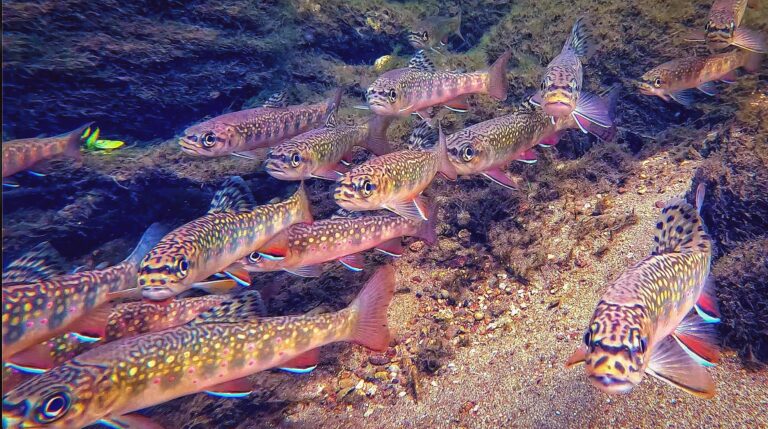
School of Brook Trout holding in a shallow depression in the West Credit River. – Steve Noakes: Trout Unlimited Canada
